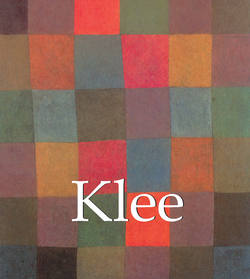Читать книгу Klee - Donald Wigal - Страница 2
На сайте Литреса книга снята с продажи.
Biography
ОглавлениеThe masters of the Bauhaus (from left to right):
Lyonel Feininger, Vassily Kandinsky, Oscar Schlemmer, Georg Muche and Paul Klee in Klee’s Bauhaus Weimar studio, 1925.
1879: On 18 December, Paul Klee is born near Bern, Switzerland.
1886: Klee begins primary school in Bern.
1898: Klee moves to Munich to study painting.
1900: Klee attends Munich Academy. He studies under Franz von Stuck.
1901: Klee travels to Italy.
1902: Klee returns to Munich.
1905: Klee travels to Paris where he sees the works of great artists.
1906: Klee marries Lily Stumpf. Klee exhibits in Munich.
1907: The couple’s only son Felix is born.
1909–1910: Klee exhibits in Bern, Zurich, Winterthur and Basel.
1911: Klee meets Kandinsky, Marc and Macke. He joins Der Blaue Reiter and is influenced by Cubism.
1912: Klee visit Paris again. He meets Delaunay and is influenced by works of Picasso, Braque, Rousseau and Matisse.
1913: Klee’s translation of Delaunay’s essay On Light is published.
1914: Klee travels to Tunisia.
1916: Klee drafted into the military. He paints very little.
1920: A major retrospective of his works in Munich. He is invited to teach at the Bauhaus, which was then in Weimar.
1922: Klee’s paintings are exhibited in Berlin and Wiesbaden.
1924: First American exposition of Klee’s works.
1926: Klee moves with his family so as to teach at the Bauhaus in Dessau.
1929: Klee works exhibited in Paris, Dresden, and Berlin.
1931: Klee resigns from the Bauhaus, then teaches at the Düsseldorf Academy of Fine Arts.
1933: Klee’s work among those called “degenerate” by the Nazis. He is dismissed from the Academy. The Klees return to Bern where they live at his parents’ house.
1934: Klee works exhibited in London, the first time in England.
1935: A Klee retrospective exhibition in Bern and Basel. Klee falls seriously ill with what is later diagnosed as scleroderma. His art style changes as he uses thick black lines.
1937: Seventeen of the Klee’s works confiscated by the Nazis are included in an exhibit of “Degenerate Art.”
1940: A large exhibition of Klee works in Zurich. Klee dies on 29 June in Muralto-Locarno, Switzerland. Commemorative exhibitions are held in Bern, New York and Basel.
In a collection of his writings titled The Thinking Eye, Paul Klee once asked his readers to take a “little journey” with him to “the land of Better Understanding.” He was speaking of the technical aspects of art, but the same invitation can be made at the outset of this brief profile of the artist. This book offers a little journey through the highlights of Klee’s fascinating life. It also visits Klee’s art in general, and detours briefly into the fifty-nine representative works of his that are reproduced here. (A complete list of Klee’s 8,926 works is in the Catalogue raisonnè Paul Klee.) The Swiss-born Paul Klee (1879–1940) was one of the most inventive, witty, and imaginative of all artists. He was a master of fantasy, offering thousands of small but impressive works that consistently presented subtle wit and profound insight. His work is rarely mistaken for that of any other artist, yet – unlike many artists who find their niche then repeatedly visit it – each of his paintings has its own identity. He adroitly plays with the viewer’s senses, making his art ambiguous, yet nearly always understated. A major influence on the evolution of modern art, even as modern art in Germany was officially condemned, Klee did not subscribe entirely to any of the many movements of his day.
* * *
